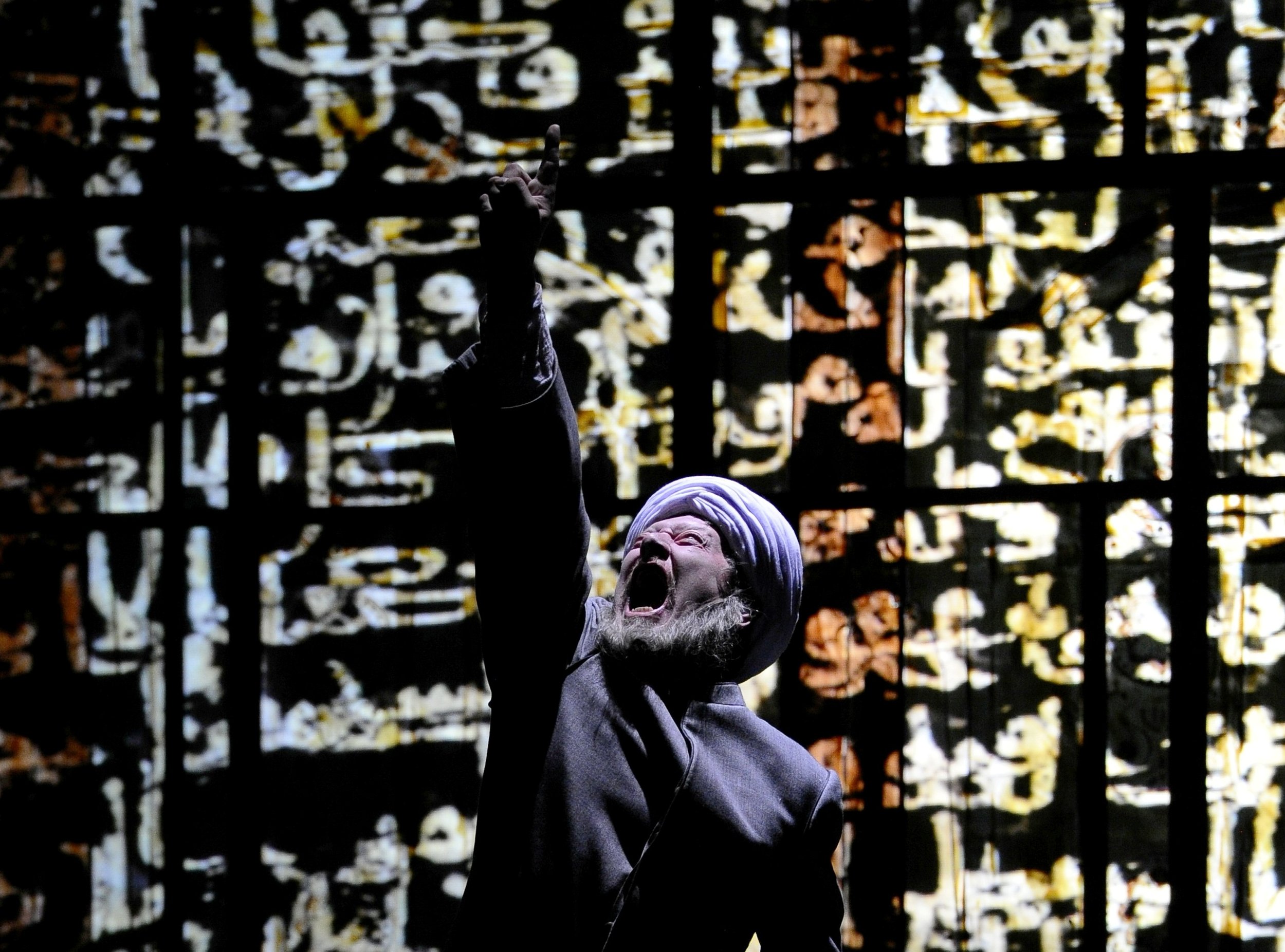
Thierry Hancisse as the Mufti of Damascus
© Cosimo Mirco Magliocca
RITUAL FOR A METAMORPHOSIS
by SAADALLAH WANNOUS
Ritual for a Metamorphosis
(Rituel pour une métamorphose)
by Saadallah Wannous
Directed and Adapted by Sulayman AL BASSAM
Translation by Rania SAMARA
Dramaturgy Georgina VAN WELIE
Set design Sam COLLINS
Costumes Virginie GERVAISE
Lighting Marcus DOSHI
Original music composed and performed by Yasmine HAMDAN
Choreography I COULD NEVER BE A DANCER
Make-up and hair Cécile KRETSCHMAR
Assistant directors Stéphanie LECLERCQ
Stéphanie LECLERCQ & Cécile FALCON
Make-up Assistant Laurence AUÉ
Actors:
Thierry HANCISSE
Sylvia BERGÉ
Denis PODALYDÈS
Laurent NATRELLA
Julie SICARD
Hervé PIERRE
Bakary SANGARÉ
Nâzim BOUDJENAH
Elliot JENICOT
Marion MALENFANT
Louis AREN
For the first time since its creation La Comédie Francaise integrates a text by an Arab author into its repertoire and invited Sulayman Al Bassam to direct this historic production.
Saadallah Wannous was an outstanding, contemporary Arab author who sought a new vision of his society in the wake of the nationalist revolutions stemming from anti-colonial struggles. His theatrical work sought to link the Arab literary tradition - the oral tales and fables - to the issues of his time. His aim was to bring theatre out of a certain elitism to make it accessible to as many as possible- much like the idea of popular theatre of Jean Vilar in France. His plays describe the great disappointment nationalist movements suffered in the face of the transformation of so many societies (Syria, Iraq, Egypt) into open-air prisons controlled mainly by the military. ‘Rituel pour une métamorphose’, written in 1994, combines tradition and modernity in the way it weaves popular literary tropes with emancipatory political issues. Based on Al-Baroudi's historical chronicle, Wannous develops a very Shakespearean idea of substitution in the Damascus of 1860. But his play draws parallels between Damascus under Ottoman occupation and the Damascus of his time, ruled by a minority caste under the brutal dictatorship of Hafez El Assad's regime. The richness of the play lies in the way Wannous articulates the axes that explode the established order.
I approached the stage adaptation and staging of Rituel pour une métamorphose with the aim of moving this beast of a play, with all its constellations of meaning and symbolism, from one linguistic and cultural context into another. The meticulous costumes- in muted black and white photography colours- along with the painted backdrops and weirdly ornate imagery that fill the beginning of the production consciously evoke and parody a heightened, yet odd, sense of Orientalism. As Yasmine Hamdan's mesmerising original composition unfolds and the male hierarchy is threatened, the house that fills the stage -symbol of the established order - has walls that begin to glow like an organic epidermis, revealing the memory of cracks and past crimes. This is why the house breaks, fractures and eventually disappears, opening the space to a purely mental architecture in which the female protagonist's body, played by Julie Sicard, is exposed to the vehement anger of a society in freefall.
‘This piece was made against the backdrop of a vicious war in Syria, in which the ruling Assad regime murdered hundreds of thousands of Syrian citizens, while the West and Arab neighbours looked on- and did nothing. I was well aware that the contentious content of the play would be explosive in this context, but nothing could have prepared me for the cowardice and hypocrisy of the late Administratrice Génerale of La Comédie Française, who -out of fear of ‘scandale’ and hysterical anxiety to have her job contract renewed by the Minister of Culture- went so far as to, for example, censor and forcibly remove the modern weaponry that was intended to be an integral part of the production. This attitude was repeated in goose-step by the press and media departments of the La Comédie Francaise who went out of their way to portray this deeply political play as a mere ‘Arabian nights’, an amusement for salons. I objected vehemently to this trivialisation of Wannous’ work -and my own- and spoke openly in outrage to the international press- more can be read here.
Despite the bitterness of this ethical and cultural cowardice, the splendid troupe of actors, stage technicians and assistants were incredibly generous and it was an honour to work with such dedicated and talented artists.’ Sulayman Al Bassam
_________________________
Production Comédie-Française
Co-produced by Théâtre du Gymnase, for performances in Marseille with Marseille-Provence 2013, European Capital of Culture.
Created in Marseille from 29 April to 7 May 2013 at the Théâtre du Gymnase, then at La Salle Richelieu, La Comédie Française, Paris, 17 May-11 July, 2013.
Running time 2h15
Photographs © Cosimo Mirco Magliocca
(Images 2 & 3: Julie Sicard; Image 4: Marion Malenfant, Sylvia Bergé, Bakary Sangaré, Louis Arene, Laurent Natrella, Denis Podalydès, Hervé Pierre, et, au premier plan Elliot Jenicot, Nâzim Boudjenah; Image 5: Laurent Natrella, Hervé Pierre, Nazim Boudjenah)
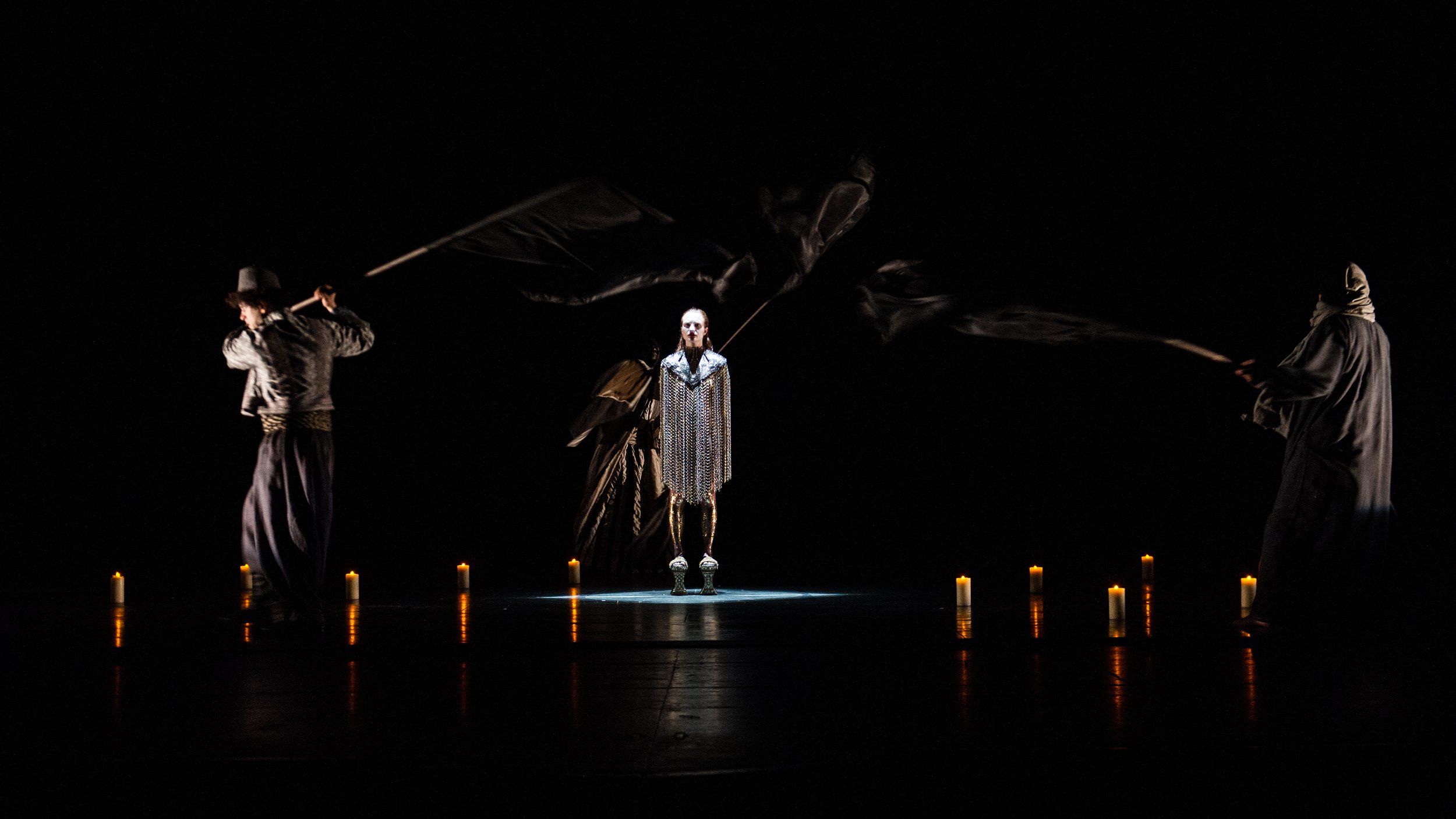
“A bleak cautionary tale, with echoes far beyond the confines of the Arab world.”
Laura Cappelle, Financial Times
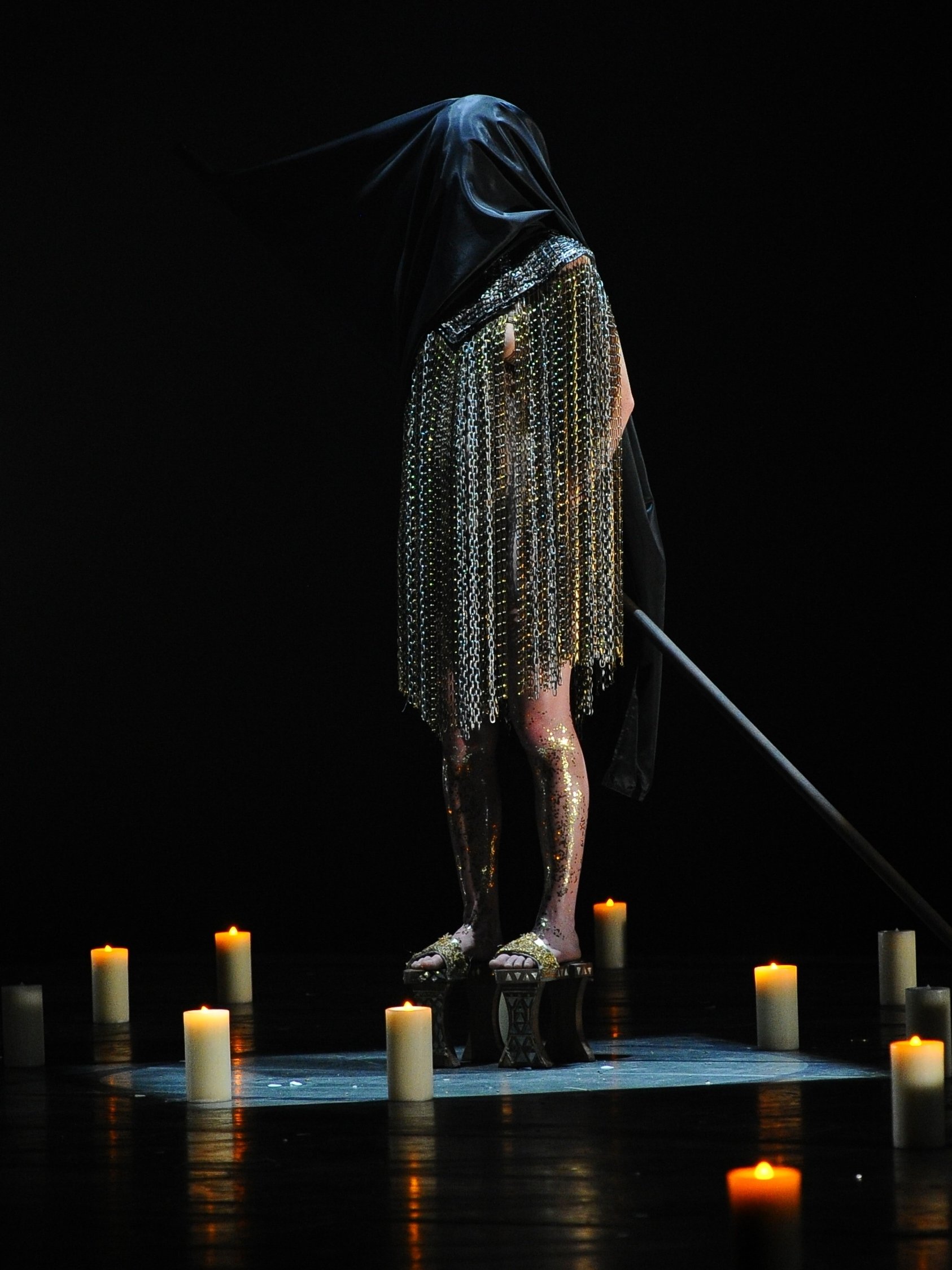
“The entire troupe is magnified in Sulayman Al Bassam’s sumptuous mise en scene”
Vallet Jacques, Le Canard Enchaine
12.06.2013
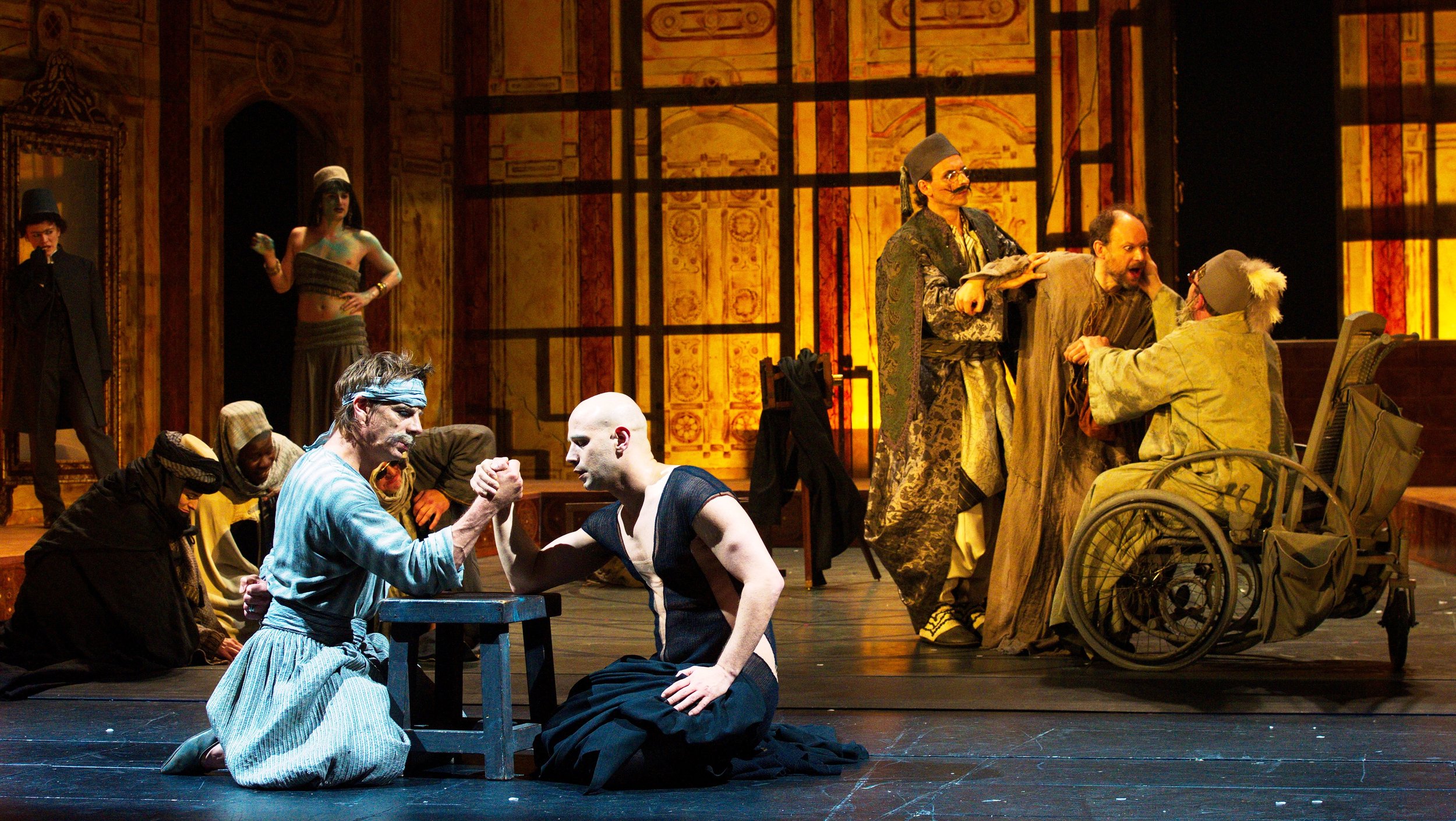
“Al Bassam lashes out at the ‘golden aviary’ of the Paris theatre world”
Celestine Bohlen, The New York Times
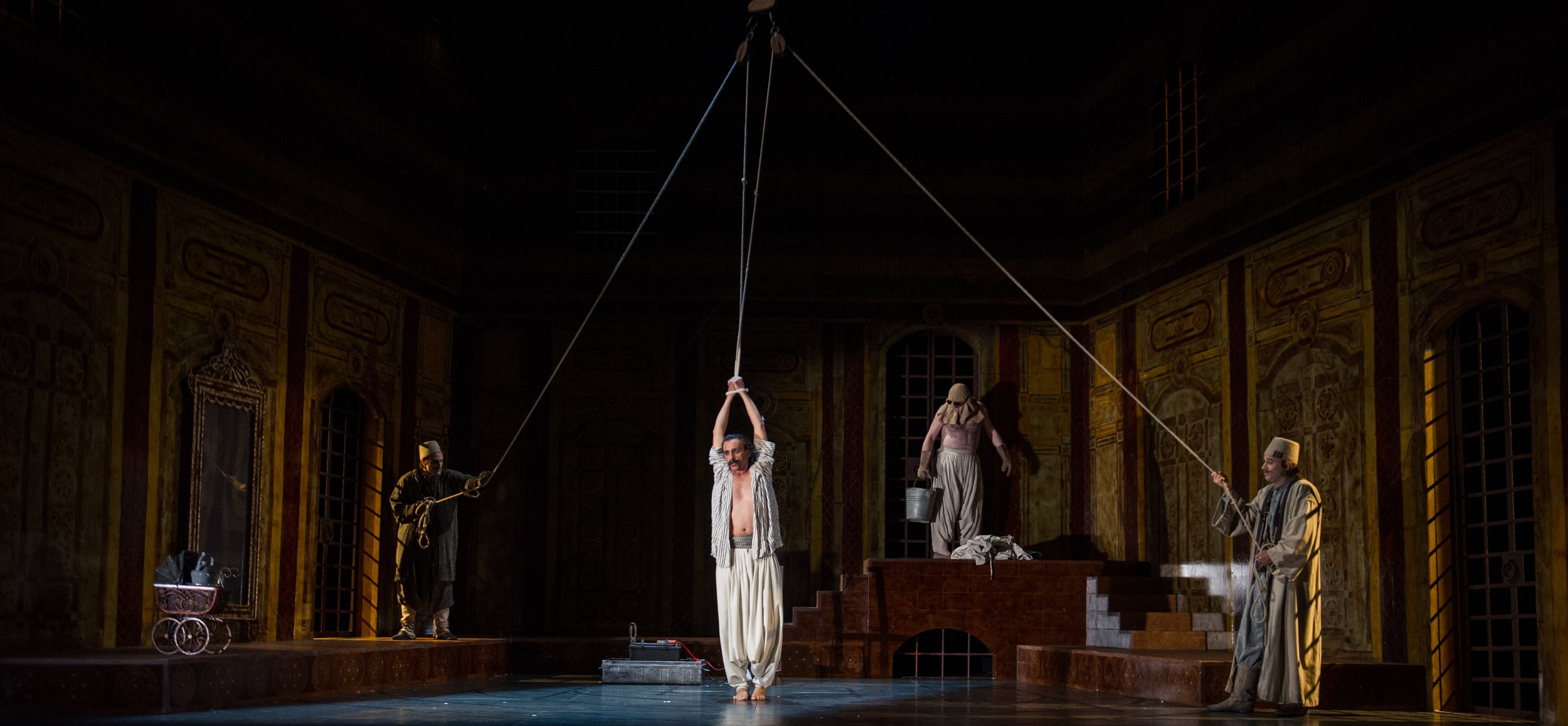
“This production plays brilliantly to the ensemble’s strengths”
The Financial Times
